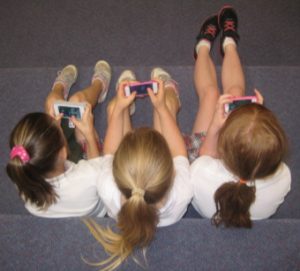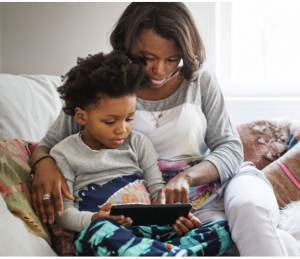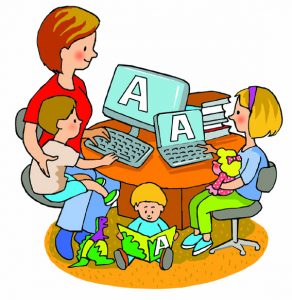Mal Lee
COVID informed societies worldwide that the digitally connected families of the young had the digital technology and competencies to continue to play a major, often lead role in the education of the nation’s young.
Leave aside for the moment that the family has always been the children’s first teacher, but since the early 2000’s the digitally connected families of the world have played the lead role in growing their children being digital and readying them to use and learn with the digital 24/7/365.
Not governments nor its schools.
They have the agency, digital mindset, resources, and competencies to play a fuller role in their children’s education, particularly if schools are willing to astutely collaborate and support the parent’s efforts.
Research has long shown (Project Tomorrow, 2011) (Lee and Ward, 2013) that while most families have wanted to collaborate with their schools in the use of the digital few schools have demonstrated the desire to genuinely network.
There have been those that have distributed their control of the teaching and learning and created networked school communities, but they remain the exception – until at least the outbreak of COVID.
What the situation is post COVID time will tell.
You are far better placed to gauge the thinking within your school, and system.
What is important is that educators understand the growing educational power of the digitally connected families, the learning happening in those families 24/7/365, the nature of the learning and how the schools and families can use the new scenario to better educate all the young.
It is also time to recognise there are now areas of learning where the families will always lead the way, that the agential nature of the learning used by the families contrasts markedly with that used in most schools, how much better placed the family unit is to accommodate accelerating change and what schools can do to support ‘time poor’ parents.
While some might disagree schools and governments should also appreciate digitally connected families now have the wherewithal to decide how their children will be schooled. The COVID experience saw a significant increase in various forms of home and micro schooling, with the surveys suggesting a significant number want the remote teaching and testing option to stay, at least to some degree.
The digitally connected families can continue to provide their children a parallel, largely antithetical mode of learning with the digital, free of any links or support from the school or government, or if the school is off the mind, work with it to create a networked learning community, that pools the resources of the school and its families.
What is now a given is that the families and their children are going use and learn with the digital 24/7/365, lifelong, using a strongly laissez faire mode of learning regardless of the school’s and governments wish.
They are, in many areas of learning not going to use the traditional, linear, highly structured approach employed across the curriculum by schools. The young will continue to learn in context, anywhere, the instant desired.
The ball is in the school’s court. If schools wish to work more closely with their families, they will have to accept that given.
In talking about digitally connected families, one is looking at those that have normalised the use of digital in its many forms, in most every facet of their lives. Their use of the digital mindset and technologies is so every day as to be largely invisible.
Wellman and his colleagues described the development in a Pew Internet study in 2008 (Wellman, et.al, 2008), which indicated that ‘networked families’ had become the new normal in the US.
Lee and Broadie (2018) preferred the term ‘digitally connected families’, that underscored the digital facet and the profound impact of connectivity, but both studies describe the natural, rapid, global shift to families being digital.
In considering the way forward it is important to recognise the accelerating pace, and global spread of what is is a natural evolutionary development, over which schools and society have limited control.
In early 2010 the schools and their communities didn’t have the devices, broadband connectivity, conferencing and critically the K-12 digital competencies required for universal remote teaching. The iPad, and the touchscreen tablets that were to transform world usage had not been released. Critically students K-6 had yet to universally embrace the use of the digital.
By 2014 they had, with over 90% plus of children 4-7 in the developed world owning or having ready access to an iPad (Rideout, 2014), (Johannsen, et.al, 2016), with children as young as three (Chaudron, 2015) taking charge of their use of, and learning with the digital.
By early 2020 90% plus of young people in the developed world had the technology, connectivity, and competencies to be taught remotely.
Government and school planners played no part in that dramatic global transformation.
The trend is for the current uptake to grow globally – albeit having reached the market saturation point in some nations – and for the technologies to become ever more sophisticated, powerful, and pervasive.
It was an expression of 50 years plus natural digital evolution and transformation, with the exponential element of Moore’s Law and the power of the market becoming that much more evident.
The families bought the technology and connectivity and chose to trust and empower their children to use and learn with the digital largely unfettered.
Post 2010 the children from the very early years on operated in a laissez-faire environment, and took charge of their learning with the digital, learning how to self-learn, and individualising their learning and capabilities in the process.
Their learning was shaped by a strong digital mindset, with most being informal, non-linear, done the instant desired, in context, with innately curious children preferring a strongly self-discovery approach.
Pause a second a second, reflect and you’ll appreciate it is how most all of us learn everyday with the digital.
It is a mode the young and old will use throughout life, as we continually adapt to the evolving technologies and societal transformation.
While schools, and particularly the bureaucracies are wedded to the belief that everything in schools all must, and indeed can be planned, the power of the global megatrends is such that even the largest of corporations realise that at best they can shape the megatrends to advantage.
That holds also for schools.
The COVID experience has already accelerated the networking of schools as organisations and their links with their families.
COVID obliged them to rely on the digital resources of their families and do so while ever living with COVID.
While it has been argued that schools networking with their digitally connected families is optional the strong suspicion is that option has already gone.
The pace, and power of society’s evolving expectations, combined with the continued necessity of school’s having to operate with COVID, while struggling to get teachers in front of classes suggests some schools at least have accepted they must network with their digitally connected families to remain viable.
- Chaudron, S (2015) Young Children (0-8) and Digital Technology Luxembourg, European Commission JRC and Policy Reports 2015 -http://publications.jrc.ec.europa.eu/repository/handle/JRC93239
- Johansen, S. L, Larsen, M.C and Ernst, M.J (2016) Young Children and Digital Technology – Aarhus University, Aalborg University, Danish Media Council for Children and Young People, February 2016 – http://www.aau.dk/digitalAssets/201/201213_national-report_2015_denmark_proofread-2-.pdf
- Lee, M and Ward, L (2013) Collaboration in learning: transcending the classroom walls, Melbourne ACER Press
- Project Tomorrow (2011) The New Three E’s of Education: Enabled, Engaged and Empowered Speak Up – How Today’s Students are leveraging Emerging Technologies for Learning – http://www.tomorrow.org/speakup/pdfs/SU10_3EofEducation(Students).
- Rideout, V (2014) Learning at Home: families’ educational media use in America The Joan Ganz Cooney Center 2014
- Wellman, B, Smith, A, Wells, A and Kennedy, T (2008) ‘Networked Families’ Pew Internet October 19, 2008 – http://www.pewinternet.org/2008/10/19/networked-families/








